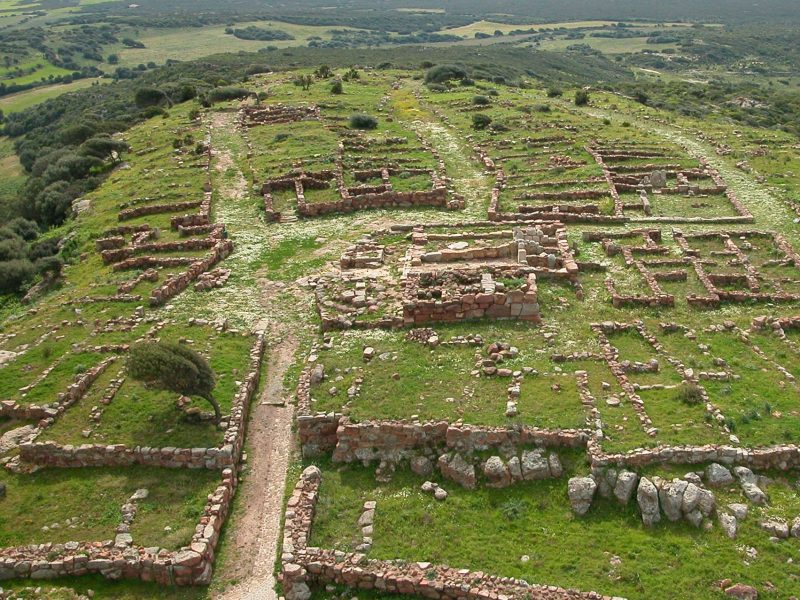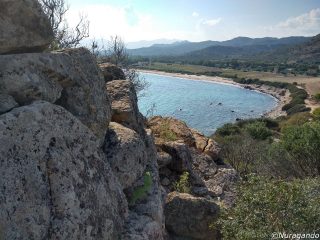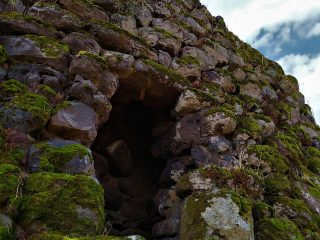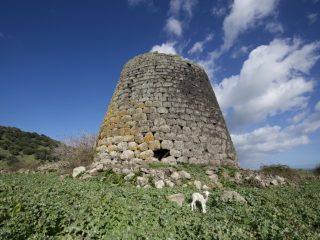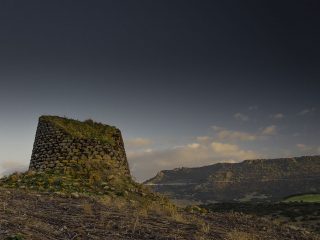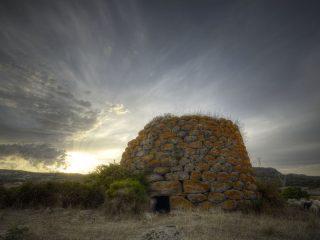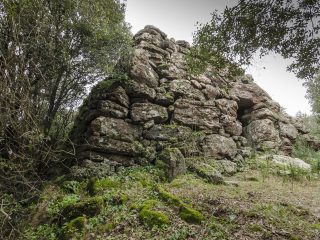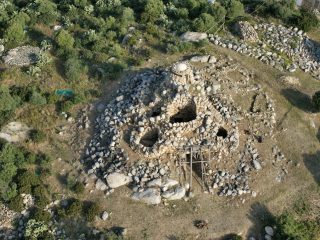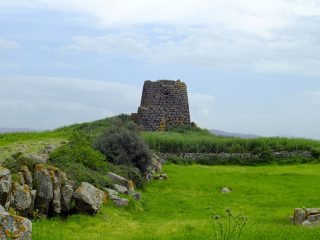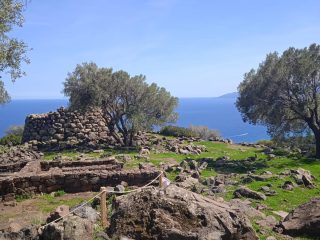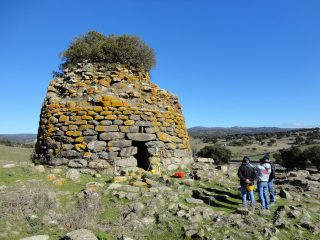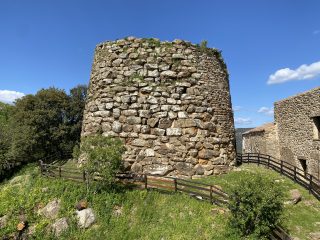Outstanding archaeological site, it is a district of at least 40 sites, arranged on a plateau starting from the Late Neolithic period (IV millennium B.C.) up until the Neo-Punic era (I century B.C.). There are other important sites around the plateau like the Nuraghe Sirai, partially interconnected by the ancient Via Sulcitana. Its position as an intersection on the important road axis and access to mineral deposits explains its foundation in the Phoenician era (halfway through the VIII century B.C.), and its expansion in the Punic era, especially during the III century B.C., when a complete overhaul of the site imprinted on it its most significant historical influence.
At the start of the Roman domination in Sardinia (from 238 B.C.), Monte Sirai remained a Punic centre: indeed, the new Roman centres can be found around the bottom of the plateau and the area of the current-day city of Carbonia.
Monte Sirai is undoubtedly the most integral of the Phoenician and Punic settlements in Sardinia. It includes three large sections which can be visited: the upper town, the necropolis and the tophet. A magnificent panorama can be enjoyed from the plateau, overlooking the Golfo di Palmas and the lagoon dominated by the islands of Sant’Antioco and San Pietro.


